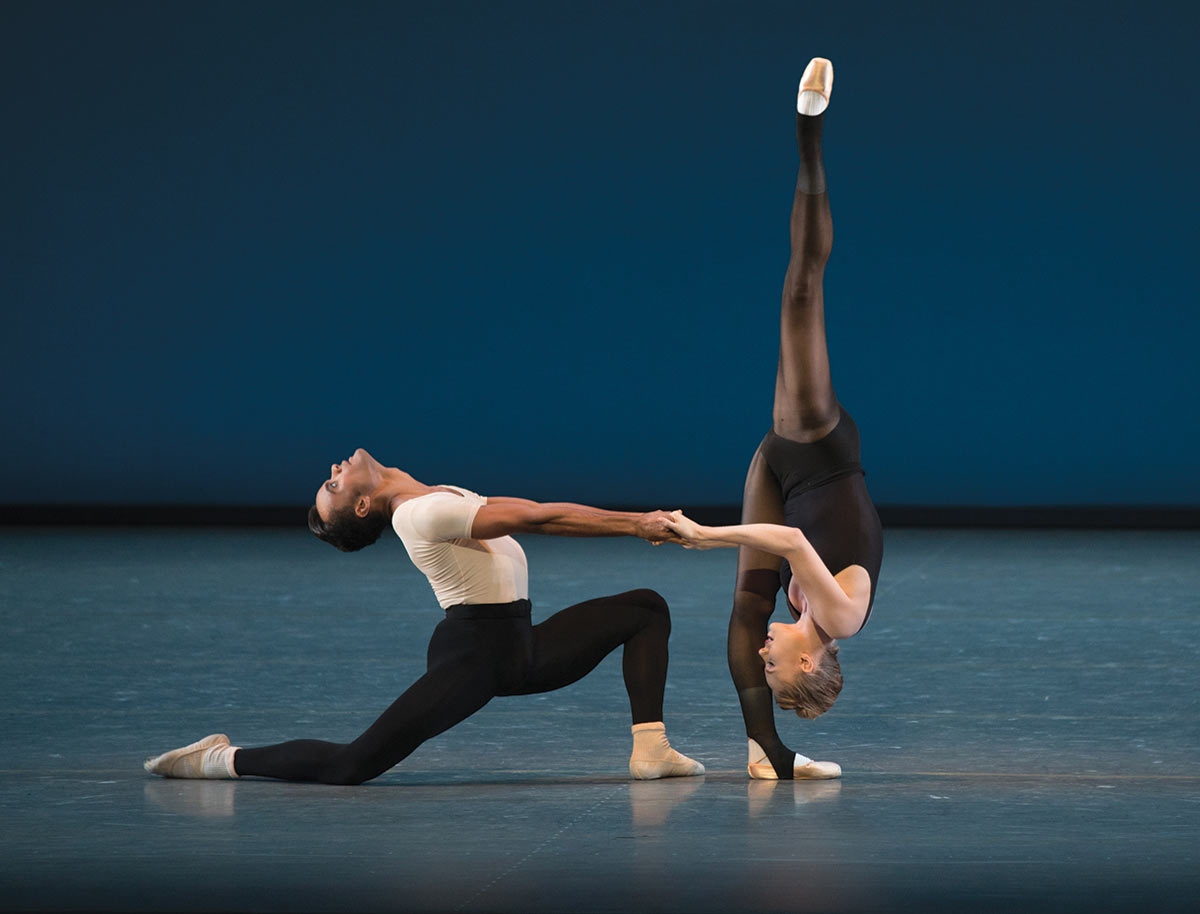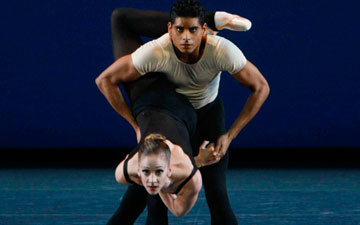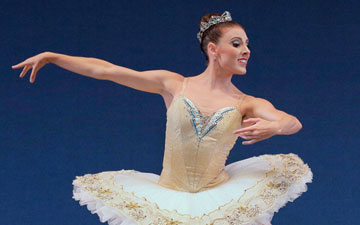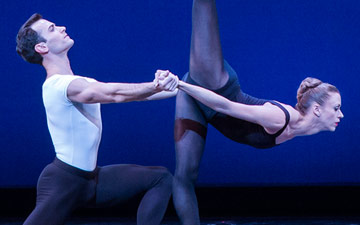
© Rosalie O’Connor. (Click image for larger version)
New York City Ballet
Three Sides of Balanchine digital season: Stravinsky Violin Concerto
★★★★✰
Recorded 21 September 2018
Streaming 11-18 March 2021 (on YouTube)
www.nycballet.com
Stravinsky Violin Concerto, George Balanchine’s favourite neo-classical ballet (or so he said), is ill-suited to being watched on a flat screen. Its opening moments and joyous final section are intended to arouse audience reactions of surprise and exhilaration. To judge from the applause on the company’s archival recording, this 2018 performance in the Lincoln Centre’s David H Koch Theater certainly did. Watch it at home, though, and you wonder at first what’s gone wrong with your broadband reception. The orchestra starts playing and the five dancers lined up on the stage don’t move for what seems ages. Have they frozen?
A live audience in the theatre holds its collective breath, sensing the dancers’ pent-up eagerness to respond to Stravinsky’s enticing rhythms. Eventually, at the orchestra’s urging, all five raise and link their arms, four men with a woman in the centre. The opening Toccata is launched with a series of high kicks by the first quintet. Seven more quintets follow in different combinations, before two contrasting pas de deux (called arias in the music) take centre stage.
Balanchine choreographed the Violin Concerto in D as part of NYCB’s Stravinsky Festival in 1972, a year after the composer’s death. He had used the music before for a ballet called Balustrade in 1941, but the new version was to be his definitive account of Stravinsky’s concerto. For the first aria, he chose a tall woman, Karin von Aroldingen and a man of similar height, Jean-Pierre Bonnefous; for the second aria, a petite woman, Kay Mazzo, and a tall man, Peter Martins. The height distinctions are usually followed in the ballet’s casting, though I vividly remember the Royal Ballet fielding Darcey Bussell and Sylvie Guillem (in the second aria) in 1992 – two tall, long-legged women challenging their partners to keep up with them.
Although Balanchine stated that the ballet was simply his response to Stravinsky’s music, he acknowledged that a man and woman dancing together already imply a story. In the first aria, the couple are combatants. Sara Mearns and Taylor Stanley confront each other, handholds grappling in wrestling manoeuvres. She pretends to yield when the solo violin (played by Kurt Nikkanen) sounds deceptively sweet, letting Stanley transport her under one arm as if steering a wheelbarrow. She disconcerts him by turning upside down on all fours, moving sideways like a crab. Taunting him by being hard to catch, she stands watching while he explodes in a brief solo of exasperation. They indulge in a mating game of contortions that would resemble insects if Mearns weren’t so lush a siren. Stanley seems an outwitted Prodigal Son, ending flat on his back as she stands, leaning away from him in triumph.

© Rosalie O’Connor. (Click image for larger version)
Aria II follows immediately, with the slender woman, Sterling Hyltin, appearing reliant on her solicitous partner, very tall Ask La Cour. She twines herself around him, needing his support for the extravagant extensions of her legs. When they separate at the brusque command of the violin, he has to rush forwards to catch and hold her knees as her legs buckle inwards. He revolves her in his arms, a protective embrace very different from Mearns’s crab-like revolutions, then wheelbarrows her tenderly instead of fiercely. He’s always attentive, no matter how wilful she’s being. She kneels, imploring him not to leave her. Towards the end, he stands behind her, one arm enfolding her as she gazes outwards. This time, he kneels, putting his hand over her eyes as she takes the same final pose as Mearns in Aria I: instead of remaining aloof, however, she’s supported by him. Is Aria II’s woman to be seen as submissive or lovingly trusting? Balanchine, of course, wouldn’t say.
Once the company dashes on for the Capriccio final section, both women appear as equals, mirroring each other as they prance in front of the ensemble. First, they dance with their partners, backed by quartets from the Toccata opening section. Then everything grows more and more intricate as formations feed into each other, multiplying and dissolving. The entire cast joins in a Russian folk dance, arms folded over chests, interspersed with feet sashaying into American do-si-dos. After a while the four leads, who swap partners, seem to be pistons in a human machine of moving body parts. The dancers must know exactly what they are doing, but it’s wonderfully bewildering for viewers – especially of a flat screen. As if by a miracle, the cast ends together on the final notes in a collective shrug (like an Ashton one) as it that’s all there was to it.
The finale has been compared to a basketful of puppies let loose to play; for the dancers, it’s the artistic version of a sugar rush. Audiences crave that thrill again – but when will it be possible?

















You must be logged in to post a comment.